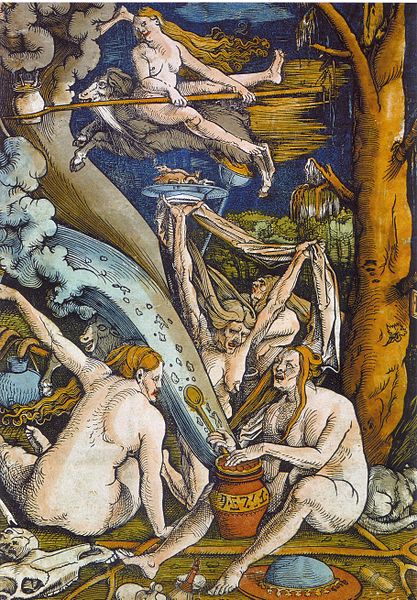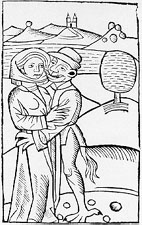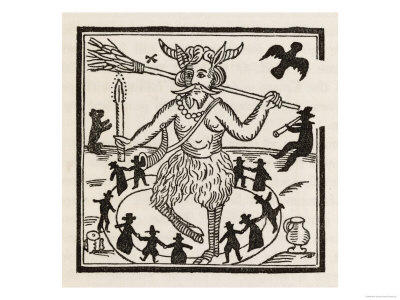 How many people in history have been ruthlessly slaughtered, accused of witchcraft? The number is hard to pin down. In America, we often think about the Salem Witch Trails of the 1600s, the number hovers somewhere in the 30's, including those who died in jail. In Europe however, starting around the 14th century, witch hunting was popularized throughout several countries including France, Switzerland and Germany. Hundreds of thousands of people were killed throughout the 14th and 15th centuries, and witchcraft remained punishable by law in some areas until the 18th century. Even before the Europeans began their hunts and before the Church condoned the practice, thousands of people were executed as witches in BC Rome. In some countries, like Saudi Arabia and parts of Africa, sorcery and witchcraft remain punishable offenses even to this day.
How many people in history have been ruthlessly slaughtered, accused of witchcraft? The number is hard to pin down. In America, we often think about the Salem Witch Trails of the 1600s, the number hovers somewhere in the 30's, including those who died in jail. In Europe however, starting around the 14th century, witch hunting was popularized throughout several countries including France, Switzerland and Germany. Hundreds of thousands of people were killed throughout the 14th and 15th centuries, and witchcraft remained punishable by law in some areas until the 18th century. Even before the Europeans began their hunts and before the Church condoned the practice, thousands of people were executed as witches in BC Rome. In some countries, like Saudi Arabia and parts of Africa, sorcery and witchcraft remain punishable offenses even to this day. There is a sharp inequality in exactly who were being accused of witchcraft, with figures on average claiming that 80-85% of people accused and murdered in Europe were women. In America, though many men were accused and hung for the crime, the majority is also made up of women. But why? Why should women be more likely to have evil intentions, make pacts with the Devil, or put a curse on their neighbor? Is it the uncomfortable relationship humans have had with sex throughout history, making women and their sexuality more prone to criticism, particularly from the Catholic Church? Is it thousands of years of stereotypes portraying women to be mentally unstable and susceptible to hysteria? Were men, and many women, fearful of strong women and the idea that they could possess power?
There is a sharp inequality in exactly who were being accused of witchcraft, with figures on average claiming that 80-85% of people accused and murdered in Europe were women. In America, though many men were accused and hung for the crime, the majority is also made up of women. But why? Why should women be more likely to have evil intentions, make pacts with the Devil, or put a curse on their neighbor? Is it the uncomfortable relationship humans have had with sex throughout history, making women and their sexuality more prone to criticism, particularly from the Catholic Church? Is it thousands of years of stereotypes portraying women to be mentally unstable and susceptible to hysteria? Were men, and many women, fearful of strong women and the idea that they could possess power? In The Malleus Maleficarum, the go-to witch hunting book of it's time, Heinrich Kramer argued that women were the more "fragile" sex and much more likely to engage in wicked activity than men. Unsurprisingly, the general attitude towards women at the time was not exactly favorable. "What else is woman but a foe to friendship, an unescapable punishment, a necessary evil, a natural temptation, a desirable calamity, a domestic danger, a delectable detriment, an evil of nature, painted with fair colours!" While Heinrich spares a few nice words and quotes for virgins and "virtuous" married women, independent women and those seen to be less than "holy" were immediately assumed to be wicked . "When a woman thinks alone, she thinks evil."
In The Malleus Maleficarum, the go-to witch hunting book of it's time, Heinrich Kramer argued that women were the more "fragile" sex and much more likely to engage in wicked activity than men. Unsurprisingly, the general attitude towards women at the time was not exactly favorable. "What else is woman but a foe to friendship, an unescapable punishment, a necessary evil, a natural temptation, a desirable calamity, a domestic danger, a delectable detriment, an evil of nature, painted with fair colours!" While Heinrich spares a few nice words and quotes for virgins and "virtuous" married women, independent women and those seen to be less than "holy" were immediately assumed to be wicked . "When a woman thinks alone, she thinks evil."Women of that time were seen to be more superstitious than men, and perhaps this was indeed true; education was typically reserved for rich men and those belonging to the clergy, though where to draw the line between "superstion" and "religious education" is debatable. Kramer also claims that women are very impressionable, making them more likely to be swayed by the Devil's evil ideas.
What is at the heart of these beliefs, shared not just by the controversial Heinrich Kramer, but many cultures and societies in the past, still shared by some today? Is it simply sex? Women and sex have a muddled history, particularly in context of Christianity. Many people believed women to be the source of original sin thanks to Eve, who tempted Adam into betraying God and eating the Devil's fruit. Women were seen as intellectually inferior to men, using their sex and beauty instead of their minds to tempt and trick those around them. It was generally accepted that women were lying, vain, stupid, lustful creatures, and it was these natural traits that made women more likely to consort with the Devil than men. "All witchcraft comes from carnal lust, which is in women insatiable." It was also believed that women would engage in wild sexual activity with demons and the Devil to secure their evil pact and gain supernatural powers.
 When Kramer claimed that women were mentally inferior, he was unfortunately only echoing a common belief present for thousands of years, one that extends into our modern world. Hysteria was considered a medical problem occuring mainly in women with roots that can be traced back to Ancient Greece, where popular theories included hysteria being the result of sexual deprivation (again, women are seen as feeble minded and sex crazy.) Symptoms of hysteria were broad and subject to the Doctor's opinion, and the tie to sex eventually resulted in a cure - vaginal massage and vibration. (More on that in another post!) What was hysteria? It could have been any combination of medical disorders and problems, but for thousands of years any developmental disabilities or mental issues were considered work of demons and the Devil, adding fuel to the flames of witch hunts. What of intentional hysteria? Was it possible that people were faking mental illnesses and medical conditions in order to "prove" the existence of witches?
When Kramer claimed that women were mentally inferior, he was unfortunately only echoing a common belief present for thousands of years, one that extends into our modern world. Hysteria was considered a medical problem occuring mainly in women with roots that can be traced back to Ancient Greece, where popular theories included hysteria being the result of sexual deprivation (again, women are seen as feeble minded and sex crazy.) Symptoms of hysteria were broad and subject to the Doctor's opinion, and the tie to sex eventually resulted in a cure - vaginal massage and vibration. (More on that in another post!) What was hysteria? It could have been any combination of medical disorders and problems, but for thousands of years any developmental disabilities or mental issues were considered work of demons and the Devil, adding fuel to the flames of witch hunts. What of intentional hysteria? Was it possible that people were faking mental illnesses and medical conditions in order to "prove" the existence of witches?During the Salem Witch trails, mass hysteria was rampant. Young women were seen screaming, contorting and throwing themselves on the floor. Neighbors accused one another of casting evil spells or taking on spectral shapes. Any reading materials discussing "magic" like fortune telling and divination were considered strictly unholy and girls caught with such material were quick to blame others around them and of course, the Devil. People who spoke up in skepticism were quickly accused of witchcraft themselves. The question remains: Why? Why did people accuse each other, pointing out their neighbors in dramatic court room antics? Why did some confess to the sins of witchcraft? Why were entire communities willing to kill each other based on superstition and spiritual "evidence"?
 The idea of a powerful woman is a frightening prospect throughout history, and this idea is personified by the Witch. The Catholic Church, scared by sexuality, tied it to the devil, making it a sin against God. Men, scared by the influence of women, degraded women's emotions and kept them uneducated. Women, scared into survival tactics in a misogynistic world, exerted what little power they could by attacking and accusing each other of moral misgivings. This was a world were politics, religion and sexism were hopelessly intertwined ... and what of our world today? True, we've stopped burning and hanging and crushing witches, but are the conditions that caused them really so radically different? As we navigate through the future of society and culture, is the next witch hunt right around the corner?
The idea of a powerful woman is a frightening prospect throughout history, and this idea is personified by the Witch. The Catholic Church, scared by sexuality, tied it to the devil, making it a sin against God. Men, scared by the influence of women, degraded women's emotions and kept them uneducated. Women, scared into survival tactics in a misogynistic world, exerted what little power they could by attacking and accusing each other of moral misgivings. This was a world were politics, religion and sexism were hopelessly intertwined ... and what of our world today? True, we've stopped burning and hanging and crushing witches, but are the conditions that caused them really so radically different? As we navigate through the future of society and culture, is the next witch hunt right around the corner?A few places to check out for more reading:
http://www.nationalgeographic.com/salem/
http://www.salemwitchtrials.com/faqs.html#victims
http://www.malleusmaleficarum.org/
http://en.wikipedia.org/wiki/Female_hysteria
http://www.gendercide.org/case_witchhunts.html
No comments:
Post a Comment